Text
That Thief King Bakura has somehow acquired a reputation as a "whatevers in the laundry basket" type of guy when it comes to fashion is incredibly funny considering that canonically this man is putting his whole pussy into being as dramatic as possible. I don't know how to tell you this but absolutely nobody in Egypt would have worn a dark red trenchcoat for any reason in the middle of the day, most especially not while running, backflipping, and generally thieving around, for any reason other than sheer vanity that spits in the face of practicality and comfort. He really really wants to look cool and intimidating all the time hes not a boring-ass sweatpants and hoodie type of guy this man has the fashion sense of a 13 year old emo girl who just watched all of Fullmetal Alchemist and considers Edward Elric a true fashion icon.
179 notes
·
View notes
Text
The Food of Millennium Book

I’ve seen some people questioning the foods listed in Atem and Bakura’s profiles that were in the millennium book and whether or not they were things they would have actually eaten at the time. It probably does seem a bit strange to see that they liked or disliked a bunch of modern foods so I wanted to address that one at a time.
I will be using Egyptian Food and Drink by Hilary Wilson as a reference. It’s part of the Shire Egyptology series for anyone that’s interested.

Atem’s Favorite Food: Ta'amiya. This is a sort of falafel unique to Egypt that is made with fava beans instead of chickpeas. Typically more greenish in color due to the bean used. “Another type of bean identified from ancient sources is ful nabed, a pale variety of the common broad bean (Vicia faba). Pharaonic cooks almost certainly invented ta'amia or felafel, fried rissoles made from mashed beans, onions, garlic, and spices. Coptic Christians consume large quantities of felafel during Lent. The Copts are said to be descended from the ancient Egyptians and many of their traditions are so old that their origins may well lie in Dynastic times.” (pg.25)
I have seen orther accounts that falafel was possibly created much later in Pharaonic history or even into Coptic Egypt but I think it’s safe to say that it’s possible for Atem to have eaten this.

Atem’s Least Favorite: Batarekh a sort of Egyptian equivalent to caviar that is still made in and around the Mediterranean. In English it seems to be referred to as Botargo or Bottarga from Italian. Apparently it’s also similar to a Japanese product known as karasumi. “Fish were also salted or picked in oil and, in later times, great quantities of preserved first were exported from Egypt. In some scenes of fish preparation, removal of the roes is shown. The dried and salted roe of the grey mullet, known as batarekh, is considered a great delicacy in modern Egypt and is reputed to be a recipe as old as the pharaohs.” (pg. 38)
So it seems batarekh is decidedly plausible!
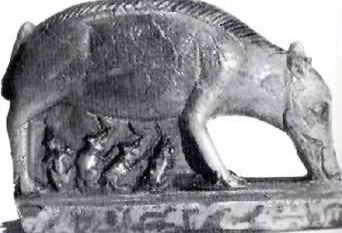
Thief King Bakura’s Favorite food: Roast pork. Kind of speaks for itself and I think it’s safe to say this one existed but it’s actually pretty interesting how it may have fit into Egyptian life. Keep in mind Egyptians were at least related to Semitic cultural groups who often have taboos against pork. “There is evidence of taboos associated with different meats, but these appear to have been more often social than religious and, if religious, then confined to a specific region or group of people. The eating of pork is quoted by many sources as having been forbidden to the Egyptians. Herodotus [Ancient Greek historian of Ancient Egypt, not always the most accurate but still a valuable source of information] details the festivities held in memory of Horus’ victory over Seth, to whom the pig was sacred. It was, he said, the only time of the year when people ate pork and those families who could not afford a pig would eat loaves made in the shape of the animal. At the Middle Kingdom town of Kahun and the Eighteenth Dynasty workman’s village at Amarna, large quantities of pig bones have been found, indicating that pork played a significant role in the diet of the working-class Egyptian.” (pg.35)
And finally…

Thief King Bakura’s Least Favorite: Hummus. Self explanatory? To me this is the most nebulous one because there’s not a lot of evidence that hummus existed before the Arab conquests but at the same time, the ingredients would have been readily available and it’s not exactly a fancy dish that takes a lot of thought to put together (unlike dried salted roe sacs?) “The most easily recognisable type [of legume] is the chick-pea, white and knobbly with a little ‘beak’, which explains why the Egyptians called it 'hawk face’. They could have been served as a vegetable or ground into flour used to enrich bread dough. The most popular modern chick-pea recipe from the Middle East is hummus, a spread of pate made from mashed chick-peas and sesame oil. Chick-pea sellers roam Egyptians markets in late summer selling cones of salted chick-peas with a squeeze of lemon juice” (pg.25)
So like I said, only a reference to it in more modern times as opposed to an ancient one but the parts needed to make it were still known to them. Ergo this one seems like the least likely to have existed.
Personally, I think it’s kind of cute that our Pharaoh of Egypt pretty much enjoyed the Arab world’s equivalent of a hamburger myself while he couldn’t stand the fancy caviar. Meanwhile Bakura likes a dish that was of course more of a questionable luxury while detesting one that, if it existed, was probably relatively common.
So there you go. I think in most cases we can say there is a chance that they would have indeed known these foods. I think it shows at the very least that Takahashi definitely tried to do some research and make apt choices as well which is nothing new.
Of course the other characters remain to be seen but I’ll be looking forward to it coming out.
Edit: So it seems like the rest of the profiles are available now \o/ it’s a lot more of the same but if anyone is interested I can address them as well
1K notes
·
View notes
Text

#yugioh#thief king bakura#yu gi oh#art#duel monsters#yugioh fanart#digital art#king thief bakura#bandit king bakura#yami bakura#redesign#kind of#headcanon#touzoku#touzokuou#touzoku oh#king of thieves#bakura
17 notes
·
View notes
Text

#yugioh#thief king bakura#yu gi oh#art#duel monsters#yugioh fanart#digital art#king thief bakura#bandit king bakura#yami bakura#bakura#touzoku oh#touzokuou#touzoku#king of thieves#bandit bakura#manga redraw#redraw
57 notes
·
View notes
Text
why are so many yugioh fans unnecessarily freaky.. like thats awesome dude but keep it to yourself
#directed to the adults who express themselves.. interestingly towards the confirmed minors of the show#why are you like this#freakazoid#sigh#i hate it here sometimes#yugioh
7 notes
·
View notes
Text

#yugioh#thief king bakura#yu gi oh#art#duel monsters#yugioh fanart#digital art#king thief bakura#bandit king bakura#yami bakura#touzokuou bakura#touzokuou#touzoku bakura#touzoku oh#bakura#theres another version of this.#imp smile
31 notes
·
View notes
Text

#yugioh#thief king bakura#yu gi oh#art#duel monsters#yugioh fanart#digital art#king thief bakura#bandit king bakura#yami bakura#touzoku bakura#touzokuou#touzokuou bakura#touzoku oh#bakura
16 notes
·
View notes
Text

#anatomy studies#or something#idk#yugioh#thief king bakura#yu gi oh#art#duel monsters#yugioh fanart#digital art#king thief bakura#bandit king bakura#yami bakura#touzoku oh#touzokuou bakura#touzokuou#touzoku bakura#bakura
18 notes
·
View notes
Text

#yugioh#thief king bakura#yu gi oh#art#duel monsters#yugioh fanart#digital art#king thief bakura#bandit king bakura#yami bakura#bakura#touzokuou#touzoku bakura#touzokuou bakura#touzoku oh#king of thieves
14 notes
·
View notes
Text


tkb with yugioh its facial proportions style in comparison to mine,, i cant decide which to keep drawing him in
#yugioh#thief king bakura#yu gi oh#art#duel monsters#yugioh fanart#digital art#king thief bakura#bandit king bakura#yami bakura#bakura#touzokuou bakura#touzoku bakura#touzokuou#king of thieves
28 notes
·
View notes
Text
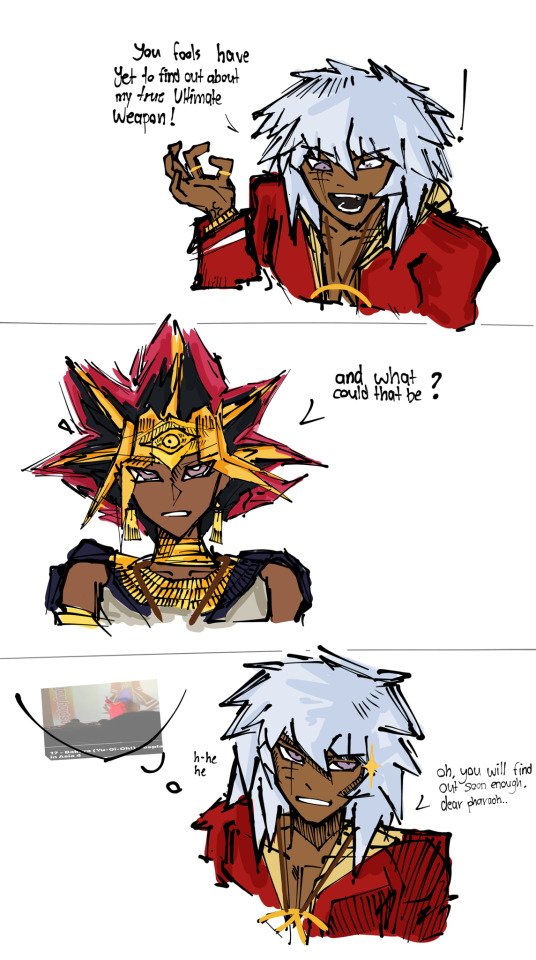
only very few people will get this but im okay with that
#yugioh#thief king bakura#yu gi oh#art#duel monsters#yugioh fanart#digital art#king thief bakura#bandit king bakura#yami bakura#touzoku bakura#touzoku-oh#bakura#touzokuou bakura#bandit bakura#king of thieves#yugioh atem#pharaoh atem#yami yugi#yami no yuugi
64 notes
·
View notes
Text

y2k tkb is my little passion i have going on. what a pissbaby.
#yugioh#thief king bakura#yu gi oh#art#duel monsters#yugioh fanart#digital art#king thief bakura#bandit king bakura#yami bakura#bakura#touzokuou bakura#touzokuou#touzoku bakura#tkb
46 notes
·
View notes
Text

modern au where the thief king and ryou bakura are siblings (requested drawing)
#yugioh#thief king bakura#yu gi oh#art#duel monsters#yugioh fanart#digital art#king thief bakura#bandit king bakura#yami bakura#bakura#touzoku bakura#touzokuou#touzokuou bakura#bandit bakura
42 notes
·
View notes
Text

quick doodle
#theres more on my insta so go check that out if you want to!!#yugioh#thief king bakura#yu gi oh#art#duel monsters#yugioh fanart#digital art#king thief bakura#bandit king bakura#yami bakura#bakura#touzokuou#touzokuou bakura#touzoku bakura
50 notes
·
View notes
Text
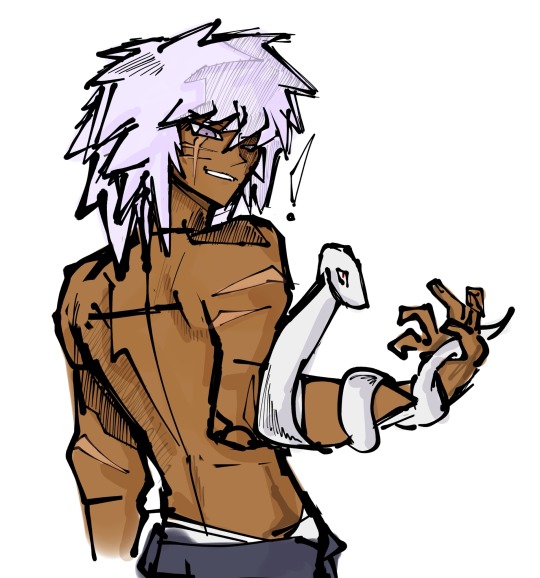
#yugioh#thief king bakura#yu gi oh#art#duel monsters#yugioh fanart#digital art#king thief bakura#bandit king bakura#yami bakura#touzokuou#touzoku bakura#bandit bakura#fanart
252 notes
·
View notes
Text
Thief King Bakura’s Age--A Fandom Conundrum
I’ve spoken on this before, and I’ve seen other people speak on it, but in this post, I want to give a couple reasons as to why I believe Thief King Bakura could not be sixteen at his time of death. I will support my belief by examining childhood development and cross-referencing TKB’s assumed childhood experiences to this information. My evidence will support the conclusion that it is highly improbable that TKB’s provided age is congruent with the Yu-Gi-Oh! canon. I will be deriving most of my conclusions based off the manga canon.
Canon Facts
I will be starting this post by examining the facts provided by the canon. (This will be a fairly short section)

For starters, the canon pegs the Kul Elna Massacre as occurring fifteen years before the events of Millennium World. In the Millennium Book, TKB’s age is stated to be sixteen.

This would lead us to conclude that the Kul Elna Massacre occurs before TKB’s second birthday. This could mean TKB’s age at the time of the massacre was anywhere between 12 and 24 months of age, assuming we are taking the Millennium Book’s information to be true.
Thief King Bakura’s Physical Appearance
I will be beginning our journey by comparing TKB’s physical depiction in canon at the Kul Elna Massacre. In the manga, we don’t get much of a view of TKB, but I’d argue we get enough to draw an analysis.
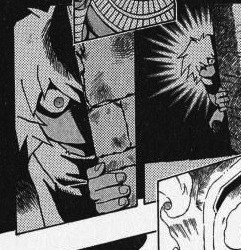
Looking at TKB’s proportions at this age, it is clear that it is not a one year old body he has, or really even a nearly two year old body. The main giveaway, for me, is the size and proportions of his hands. While it can be stipulated that the proportions could be inaccurate for artistic reasoning, I still argue that the size of his hands in comparison to the rest of his body, as well as the size of his fingers, indicates that he is not 1-2 years old. At that age, an infant’s hands are fairly small in proportion to their body, and their fingers appear to be fairly thin and indextrous. TKB’s proportions seem to be far more mature than those of most 1-2 year olds, and far too much so to be considered as a mere outlier.
Language Acquisition
Next, we will look at language acquisition for children. Notably, TKB is presented to be fairly well spoken as a 16 year old, articulating complicated notions and using word play easily in his speaking.
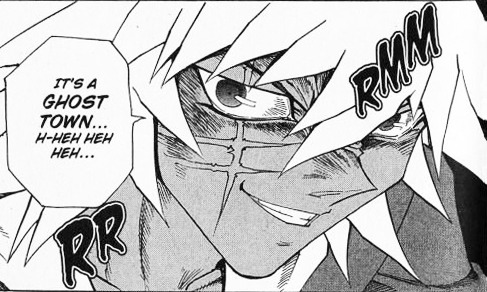
The point I’m trying to make here is that TKB has a firm grasp of spoken language.
Common language, by its very definition, is something that cannot be developed in isolation. The complexity of one’s grasp on spoken language depends on the quality and variety of sources one can mimic, and (more crucially) the development of the language at critical age. Language acquisition begins at approximately 9 months of age (<1y.o.), and telegraphic begins at 24 months (2y.o.) The telegraphic stage is when “children begin to produce longer and more complex grammatical structures.” This is the stage when syntactic categories (noun, verb, etc.) are definitively present in a child’s speech, and it is a crucial period for children to pick up adult speech norms. According to TKB’s canon age, he would not have yet reached this critical period of language acquisition by the time the massacre occurred. Children who are isolated from outside linguistic influences are unable to pick up on these important lessons during the critical linguistic stages, and are at a lower level of speech articulation in comparison to their socialised counterparts, according to the Critical Period Hypothesis. It would be greatly unreasonable for TKB to have the command of language he has if he were to have been so young when the massacre occurred.
Trauma Recollection in Children
Thief King Bakura seemed to demonstrate clear recollection of the events of Kul Elna. His long term memory of a traumatic event remained concrete fifteen years removed from the event–and more importantly, he was able to express verbal memory. In reference to a study conducted by Terr in 1988 on children aged 1-5 who experienced a traumatic event, Robyn Fivush states
All children showed evidence of remembering the trauma in their behaviors, such as expressing specific fears, but children below the age of about 18 months when the trauma occurred were unable to express any verbal memory. Children between 18 and about 28 to 36 months at time of trauma could subseuqently (sic.) give fragmented, “spotty” verbal accounts; only those children older than about 2.5–3 years at time of experience were able to give a complete verbal account of the trauma. This pattern suggests that children’s verbal ability at the time of experience is a critical factor in their subsequent ability to recall the experience verbally.
The rest of Fivush’s report goes on to articulate how the memory of a singular traumatic event (Type I) seems to become more concrete as the age at the time of the trauma increases. The critical age seems to be three years old, where children who are younger than this demonstrate severe difficulty vocalising and recalling their trauma as it occurred. If canon is assumed correct, then TKB would not have reached this critical age by the time the massacre occurred.
In Fivush’s report, there is a case study mentioned that does seem to add dimensionality to this “critical age.” The case study done by Hewitt in 1994 talks of a child who experienced a trauma at two years seven months, and then was able to describe it verbally as a four-year-old. However, the child was already quite verbal at the time of the trauma (due to outside influences), and thus could not serve as a sufficient analogy for TKB. In other words, TKB did not have the social network needed to be an outlier to this theoretical rule of trauma recollection at a critical age.
Feral Children, and Where Bakura Does Not Fit the Mould
A feral child is defined as an individual who grew up away from outside contact from a very young age. Feral children are most commonly nonverbal, unable to read social behaviour, and live in a way that is incompatible with the rest of society. I cannot and will not pretend to have read every single case of feral children, but what I can tell you is the general trend of the most popular cases that I have seen and researched, and why these do not fit TKB.
Feral children, in nearly every case I have seen, are unable to use human language, or their use is incredibly limited. This simply is not the case with TKB. As aforementioned, TKB employs a high level of language, which he could not have developed as a child outside of human contact.
Feral children who are isolated as infants manage to survive by being taken in by other animals, and thus display animal mannerisms instead of human mannerisms. While TKB (and in part Yami Bakura) does tend to display serpentine characteristics, clearly of Diabound’s influence, he was not raised to display serpentine mannerisms. He is still able to act human, so it is evident that TKB was socialised for a number of years before the massacre. (many feral children are believed/confirmed to have been abandoned as infants, before they are able to solidify human speech and behaviours.)
TL;DR?
It is simply very difficult to believe, given these points, that Thief King Bakura could have been less than two years old at the time of the slaughter of Kul Elna. He does not have the physical appearance of a 1-2 year old, his language skills are far too advanced for him to have been abandoned at such a young age, his trauma recollection seems too verbally developed for him to have been so young at the time of the trauma, and he does not fit in with any prior case of feral children. If you have questions or concerns, please do not hesitate to visit my ask box, or simply comment on this post (be kind though, please!)
I hope this post was informative to you, and I hope you enjoyed what I had to say (or at least survived reading it ^^;)
296 notes
·
View notes
Note
Where is the oiled up Marik
anon honey, patience please, ur embarrassing me infront of the guests
#help#km cryinh#i showed this request to my friends and mutuals#we all loved it#we love you anon#why are anons so bold#i love you#anon#request#marik#marik ishtar#malik ishtar
2 notes
·
View notes